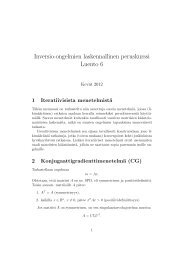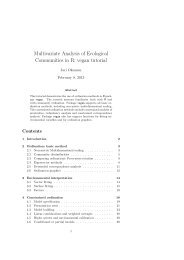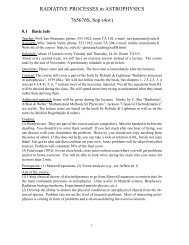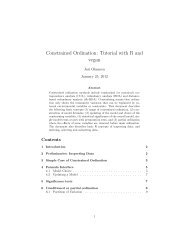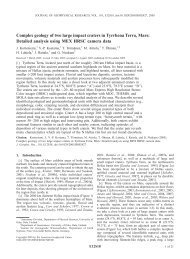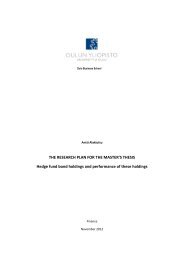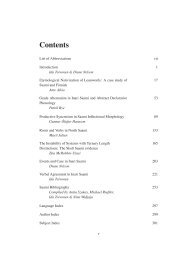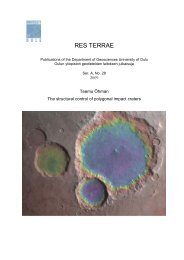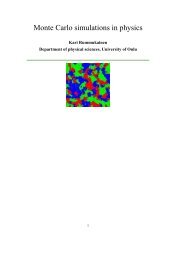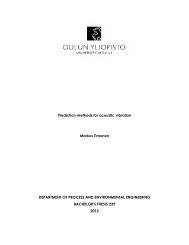Juha Köykkä - Oulu
Juha Köykkä - Oulu
Juha Köykkä - Oulu
- TAGS
- juha
- oulu
- cc.oulu.fi
Create successful ePaper yourself
Turn your PDF publications into a flip-book with our unique Google optimized e-Paper software.
Res Terrae, Ser. A 32, J. <strong>Köykkä</strong>, Sedimentology of the Mesoproterozoic Telemark basin-fills, South Norway: implications for<br />
sedimentation processes, depositional environments and tectonic evolution<br />
lection of commonly associated sedimentary attributes within lithological units. Thus,<br />
lithofacies associations represent the basic building blocks of facies models that sum-<br />
marize a particular depositional system within the sedimentary environment and basin.<br />
According to Walker (1992), the four fundamental purposes and functions of a facies<br />
model are that it must (i) act as a norm for comparison, (ii) act as a framework and<br />
guide for future observations, (iii) act as a predictor in new geological situations, and<br />
(iv) act as an integrated basis for the interpretation of the system it represents. The li-<br />
thofacies associations can be later grouped to form even bigger lithofacies successions<br />
in which a series of lithofacies pass gradually from one to another.<br />
To extent the lithofacies analysis to the entire basin, it is necessary to follow the<br />
basin analysis workflow, starting with the lithostratigraphic mapping and correlations.<br />
The lithofacies analysis usually starts by establishing a facies scheme that encom-<br />
passes all the lithological units in the studied area. The lithofacies in these schemes<br />
include detailed measurements of different structures, lithofacies logs, outcrop<br />
sketches and photographs, additional sample collection, paleocurrents, paleohydrology<br />
and ripple-index measurements. The lithofacies classification used in this thesis was<br />
designed to be as simple as possible to cover all the necessary information from each<br />
lithological unit and to form a fundamental core that was used in every paper.<br />
4.3 Sequence stratigraphy<br />
Sequence stratigraphy studies the change in depositional trends and cycles in response<br />
to the interplay of accommodation and sediment supply, from the scale of individual<br />
depositional systems to entire basin-fills (Catuneanu et al., 2005, 2009; Catuneanu,<br />
2006). Sequence stratigraphy reveals the history of sedimentation in a basin in re-<br />
sponse to base level cycles, which is the highest level to which sediment successions<br />
can be built (i.e., more-or-less sea level). Therefore, sequence stratigraphy assumes a<br />
subdivision of the sedimentary pile into sequences, which are stratigraphic units re-<br />
lated to cyclic change in the sedimentation through time. A sequence stratigraphic<br />
framework includes genetic units that result from the interplay of accommodation and<br />
sedimentation, which are bounded by stratigraphic surfaces. Each genetic unit is de-<br />
fined by special strata stacking patterns and bounding surfaces, and consists of a tract<br />
of correlatable depositional systems (i.e., system tracts). The mappability of system<br />
40



